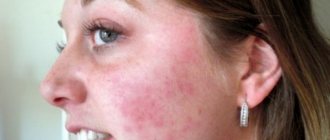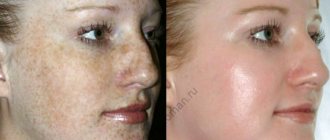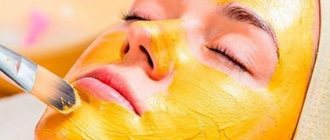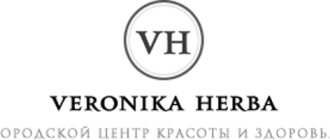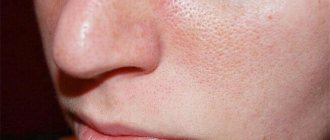Trichloroacetic acid TCA 15%, 25%, 35%
TCA peeling (Mediderma) - a classic medium peeling, is one of the main methods for correcting wrinkles and other age-related skin changes, as well as post-acne scars and stretch marks. Depending on the concentration of TCA peeling penetrates to different depths required in each specific case. This is an ideal peeling for local use in the area of creases and deep wrinkles, hyperpigmentation and various skin texture disorders.
Expected effect:
- intensive skin rejuvenation,
- smoothing out fine and deep wrinkles,
- relief leveling
- elimination of stretch marks, scars
- elimination of hyperpigmentation
Medium peeling usually requires pre-peeling preparation. This could be the home use of creams or lotions containing light exfoliating and renewing ingredients, such as fruit or AHA acids. With proper preparation, the skin is “trained” before the most aggressive impact, which will shorten the rehabilitation period, improve skin regeneration and get a more pronounced result. Also, to prepare the skin for medium peeling, it is recommended to first undergo 1-3 sessions of superficial peeling.
Peeling effect
Superficial chemical peeling tightens enlarged pores, eliminates dryness and acne. Thanks to the improved supply of oxygen and nutrients to cells, the condition of the skin improves, the face becomes more radiant and fresh.
Medium chemical peeling helps solve the problem of pigmentation and makes fine wrinkles and tubercles less noticeable. Complexion and relief are evened out.
The achieved effect of deep chemical peeling is very high. With its help, it is possible to get rid of significant wrinkles and sagging face; deep peeling also solves such a complex problem as removing scars and shallow scars. After a long recovery, the skin becomes tightened and more resistant to age-related changes.
To achieve maximum results, it is important to contact a specialist who will select the most suitable type of peeling for your skin type, based on its condition. Chemical peels at home are not recommended.
How is the TCA peel procedure performed?
The TCA peel procedure is quite sensitive. When applied to the skin, a fairly intense burning sensation occurs after 1-2 minutes, but it passes quickly. Then the so-called “frost” forms on the skin - a white coating consisting of coagulated upper layers of the epidermis. It is practically invisible and easily washed off. TCA peeling may not be accompanied by any redness, so the patient does not observe any changes in the skin immediately after the procedure. However, a pronounced vascular reaction and slight swelling are also possible and depend on the individual characteristics of the skin. 2-3 days after the procedure, a dark crust forms in the peeling area, which completely disappears within 5-7 days. Young skin after the crust has peeled off is pink; over the course of several days it gradually acquires its normal color. It is very important to use sunscreen or avoid sun exposure altogether for at least two weeks to prevent pigmentation from forming in the peeling area.
Rules of behavior after the procedure:
- avoid thermal procedures (sauna, steam bath, hot shower) for 2 weeks after the procedure
- Avoid skin exposure to sunlight and use SPF 50 sunscreen
- Gently cleanse the skin; in case of severe tightness, use light moisturizers
- try to avoid strong tension and activity of the facial muscles, as this can lead to cracking of the crust and longer healing
The recommended course of TCA is 15%, 25%, 35% from 1 to 5 procedures, once every 1.5 - 2 months.
What is a chemical facial peel?
The cells of the outer layer of skin (epidermis) are able to renew themselves; in youth, no additional external efforts are usually required for this. But with age, renewal processes slow down and require stimulation. In modern cosmetology, there is a highly effective and safe method that stimulates exfoliation and removal of the stratum corneum - exfoliation, or peelings.
Chemical peeling is a salon procedure aimed at intensive exfoliation of dead cells of the outer layer of skin using special substances - acids. In other words, chemical peeling removes dead cells, thereby stimulating the renewal processes of the epidermis and dermis.
In addition to various acids (glycolic, fruit, lactic, etc.), the compositions of chemical peels may also contain other highly effective components that have anti-inflammatory, whitening, nourishing and healing properties, so the peeling procedure is increasingly gaining popularity, becoming one of the most popular procedures in modern cosmetology.
Chemical peeling stimulates the body's protective functions, which leads to increased production of hyaluronic acid, collagen and elastin - these substances are responsible for the structure of the skin, its youth and elasticity. The result of exfoliation is an improvement in skin tone, smoothing out unevenness, acne marks and fine wrinkles. In addition, peeling procedures also help fight pigmentation.
Depending on the degree and depth of exposure, there are several types of chemical peels.
Recovery period
The duration of recovery after the procedure depends on the depth of acid exposure. So, after superficial peeling, recovery will take several days, after medium peeling – up to 14 days. Skin regeneration processes after deep peeling require more time - up to six months.
Regardless of the type of peeling and the duration of the recovery period, it is important to take care of your facial skin and follow your doctor’s recommendations. There are few restrictions during this period, but it is highly advisable to comply with them; first of all, it is to refrain from visiting the bathhouse, sauna and, of course, the solarium. Protecting the skin from ultraviolet rays, even in winter, is also the main rule during the recovery period. It is recommended to drink plenty of fluids and touch your face as little as possible.
In addition to generally accepted restrictions, there may be individual ones, which are prescribed by a cosmetologist. A professional specialist will also give recommendations on the use of skincare and decorative cosmetics during the recovery period after the procedure.
Peeling with vinegar: recipes
Homemade peeling with table vinegar
We dilute table vinegar with cool boiled water to obtain a 1% solution or a composition of even lower concentration. Soak cotton pads in it and apply to the skin, avoiding the area around the eyes. After two minutes we refresh the disks, and after another two minutes we remove them. We treat the face with soda solution and moisturize. Due to the low concentration of the liquid, peeling will begin only after one or two days. The convergence of keratinized cells can occur unnoticed during daily cleansing of the epidermis. Peeling with low concentration vinegar helps cleanse the surface of the face, activate cellular metabolism, restore metabolic processes, and neutralize inflammation. Skin tone improves, color normalizes, and the face looks cleaner and fresher.
Peeling with fruit acids
Mix a teaspoon of apple cider vinegar, orange and currant juice, and corn oil. Mix everything thoroughly and apply a thin layer to the skin. Leave the mixture for five minutes and wash off with cool water and a small amount of soda. If the skin stings too much, you can remove the mixture earlier. After the procedure, the face may acquire an unnatural red tint - this is the result of the influence of acetic and ascorbic acids. We soothe the skin with a light moisturizer; its condition should improve in a couple of hours. If there is no discomfort after the procedure, you can lightly rub your face with a thick, damp sponge, this will speed up the process of exfoliation of the stratum corneum. This cleansing option can only be used to care for oily or problematic skin. It has an intense drying effect and, in addition to high-quality cleansing, improves the condition of the skin, neutralizing acne and oily shine.
Wine peeling with acetic acid
To prepare the cleansing base, you can use dry red wine in its pure form, this will provide a fairly mild effect. Acetic acid will help enhance the dissolving effect of the component on dead cells. For this purpose, add one part wine or apple cider vinegar to three parts wine, mix the composition and apply it to the skin in layers. Peeling with wine vinegar has a positive effect on the condition of blood vessels, strengthening their walls and normalizing blood circulation. As a result of this effect, the color and texture of the face are normalized, active tissue rejuvenation occurs, and cellular respiration is restored. You should not overuse the composition; it can cause the epidermis to turn red.
Milk peeling with vinegar and fruit acid
Mix cool milk and orange juice in equal proportions. The composition should curdle, this will indicate a high concentration of fruit acids in the juice. Add a teaspoon of apple or wine vinegar to the mixture, mix the composition and apply to the skin of the face in layers. You can also use the product to moisturize compresses. After the procedure, wash with regular cool water. In this case, there is no need to neutralize with soda. Just moisturize the skin with cream or tonic. Cleansing and disinfecting the surface of the face allows you to get rid of sebaceous plugs and acne, prevent infection of wounds, and reduce the intensity of inflammation. The composition can be used to care for any type of skin.
Apple peeling with vinegar
Grind half a sweet apple to a puree, add a teaspoon of apple cider vinegar and a teaspoon of olive oil.
Mix the composition and apply to the skin, after 3-5 minutes we begin to roll the mass into pellets, gently massaging the epidermis. Remove the pellets with a cotton pad soaked in a soda solution. After the first procedure, the skin becomes cleaner, fresher and softer. Peeling most often occurs unnoticed, without causing discomfort or disruption to the daily routine. It is recommended to accompany the recovery period with daily moisturizing and cleansing with milk. It is better to refrain from using scrubs for a while. Source: https://fancy-journal.com/beauty/tvoe-litso/7123-piling-uksusom
How to exfoliate with vinegar
The procedure is not difficult, but before peeling with vinegar, you need to carefully prepare the epidermis. Facial care after cleansing also has its own characteristics. Some experts recommend already a couple of weeks before the planned time of peeling to abandon cleansing masks and aggressive scrubs.
The first stage in preparing the skin is makeup removal and surface cleansing with milk, gel or lotion according to your skin type. Neglecting these manipulations can lead to infection of the pores and the development of a persistent inflammatory process. At the same stage, products for degreasing and disinfecting the surface of the face are used.
At home, it is impossible to do deep peeling with vinegar; you can only achieve medium-deep penetration and impact of the components. To enhance the effectiveness of the product, it is recommended to steam your face. For oily skin, a steam bath based on herbs and essential oils is suitable; to prepare normal and dry skin, you can use a hot towel, which is applied to the face for a quarter of an hour.
Given the weak concentration of the peeling base, applying protective agents at home is not practiced. You just need to rely on your feelings during the manipulation. If a strong burning sensation or unbearable itching occurs, the surface of the face must be quickly cleaned, the effects of acetic acid must be neutralized with a soda solution, and a chamomile compress can be used to soothe the epidermis. If traces of a severe chemical burn appear and the intensity of discomfort increases, you should immediately consult a doctor.
Options for vinegar peeling:
- Layer-by-layer peeling with vinegar. In this case, the composition is applied to the skin of the face in a thin layer, after a couple of minutes a second layer is applied, and after another couple of minutes a third layer is applied. After another two minutes, take a thick sponge, moisten it in cool water or a weak soda solution and begin to clean the surface of the face with slow circular movements. After five minutes, rinse your face with cool water and apply moisturizer. This is one of the most intense exposure options. After a few hours or days, peeling of the epidermis should begin; the time depends on the concentration of the solution and the characteristics of the skin. At this stage of cleansing, it is not recommended to mechanically influence the face in order to quickly remove the stratum corneum. Several times a day, the face must be moisturized and nourished with daily cream.
- Peeling with vinegar as a gommage. To create such compositions, softening base components are often used, so the effect is softer. After the mass is applied to the skin, you need to wait about 2-3 minutes. During this time the composition will dry out. We wet our fingers in water and begin to roll the peeling base until pellets form. We remove the pellets with a cotton pad, treat the skin with lotion or tonic without alcohol. With this option of the procedure, the peeling of keratinized cells occurs already during the session, so subsequent peeling is less pronounced. After exposure, the face also needs to be moisturized until the effects disappear completely.
- Peeling with vinegar based on compresses. The easiest cleansing option. To carry it out, most often only diluted table, wine or apple cider vinegar is used, with which a gauze napkin or several cotton pads are moistened. They are applied to the face and removed after 5-10 minutes. After the procedure, we don’t scrub the face, just neutralize it with a soda solution and moisturize it.
Whatever peeling option is chosen, after the procedure, severe hyperemia, mild itching, and peeling may appear. These are the consequences of exposure to acetic acid and other components of the composition. There is no need to be afraid of such a reaction - this is evidence of the correct implementation of the manipulations.
To obtain a more lasting effect from the procedures, it is recommended to treat the skin with boiled water every day with the addition of a few drops of vinegar. This will not only consolidate the effect of peeling, but will also provide the skin with excellent condition in between courses.
